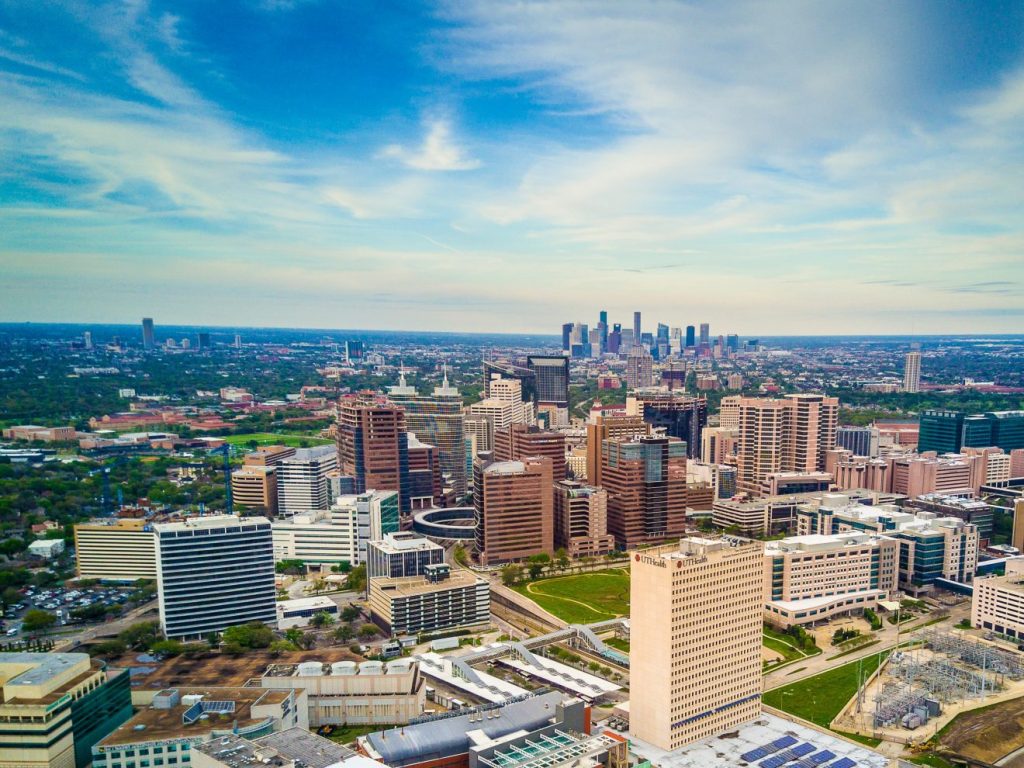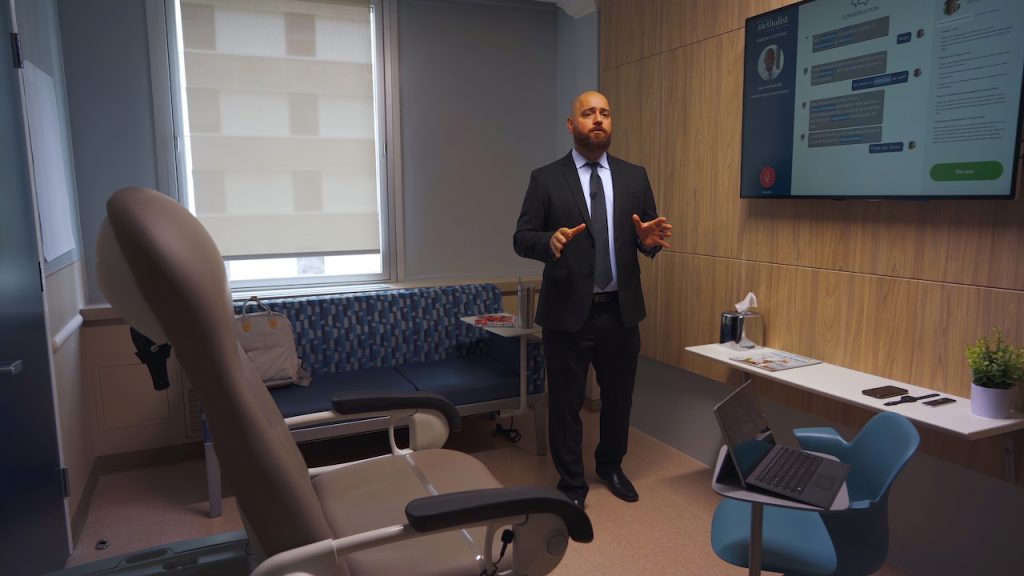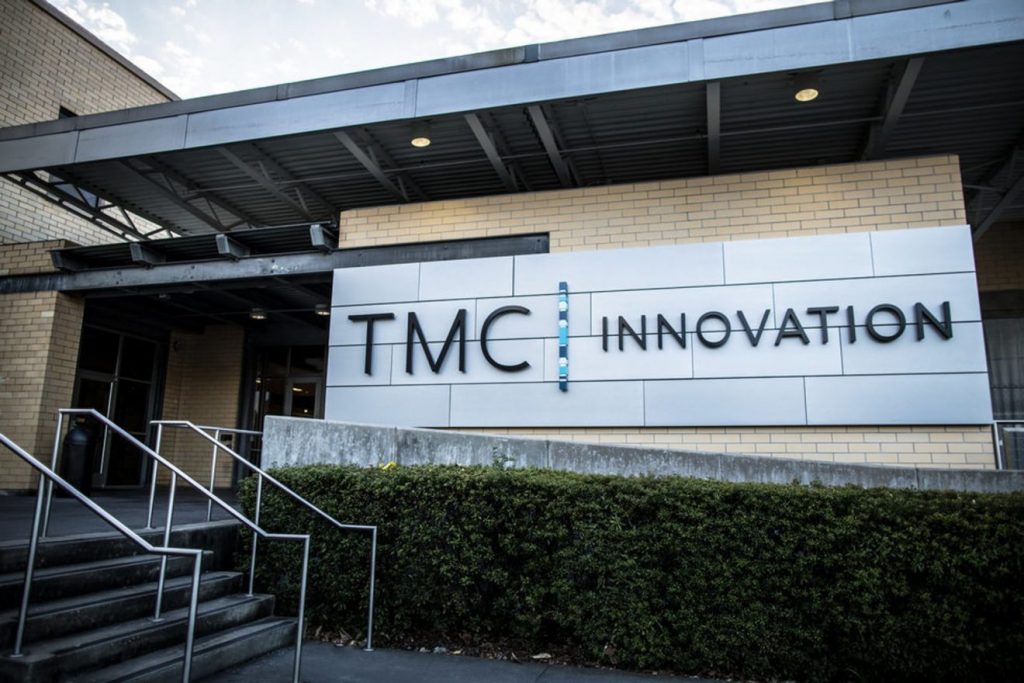
There’s a saying that “everything is bigger than Texas,” and healthcare is no exception. Located just south of downtown Houston in between the historic Hermann Park and Rice University, Texas Medical Center (TMC) consists of 54 medical institutions spread throughout its expansive campus, making it the largest medical complex and the 8th largest business district in the world. It is, quite practically, a medical city.
Medgadget had the opportunity to spend a few days last month visiting TMC as well as a couple Houston universities. We were well aware that TMC pioneered many medical innovations, such as one of the first total artificial heart implants. But as our Houston tour took place just as coronavirus was beginning to spread across the U.S., we got a somewhat changed and surreal perspective on the area’s medtech landscape, as well as a deeper respect for the work being done there.
Our first stops were actually outside of the TMC complex, but were two notable examples of the collaborative partnerships that TMC institutions have with some of the 40 academic institutions in the greater Houston area.
First up was the University of Houston Technology Bridge, a facility that houses not only the university’s tech transfer offices and tech incubator, but also office and lab space for non-UH companies to lease. According to UH, about 40% of the 48 companies housed in the Bridge are working on a healthcare-related venture.

Our next stop was Rice University. Although Rice doesn’t have a medical school, its close proximity to TMC and variety of partnerships makes it somewhat of a de-facto medical school for the university. We paid a visit to their NEST360° offices. NEST (Newborn Essential Solutions and Technologies) is a global partnership between institutions in six countries to reduce newborn deaths in sub-Saharan African hospitals by 50% through the development of durable and affordable medical devices. Many of the NEST360° devices were developed within the Oshman Engineering Design Kitchen (OEDK), a 20,000 square foot design studio and maker space exclusively for undergrad engineers. Our campus visit also included a stop at Rice’s BioScience Research Collaborative building to meet a research team that is developing a wearable device that can generate high-resolution images of anatomical features beneath the surface of skin using light.

We returned to the Texas Medical Center campus to learn about how some of its world-renowned hospitals are going beyond simply treating patients. At the University of Texas MD Anderson Cancer Center, we spoke with Dr. Susan Peterson, a researcher from the department of Behavioral Science about CYCORE, an experimental telemedicine platform that utilizes mobile and sensor technology to remotely monitor symptoms and improve patient care and quality of life. Down the street at Houston Methodist Hospital, they’ve converted an entire wing of the building into the Technology Hub. The recently opened hub is an interactive showroom, testing environment, and training center for innovative technology. Each room in the hub is furnished like a typical room visited by patients, such as a waiting room, an inpatient and outpatient room, and even a patient’s living room/”home hospital”. The rooms are designed to demonstrate how medical devices, as well as consumer technology like smart TV’s, Alexa, and VR, can work together to enhance healthcare for both patient and clinician.

Our last set of stops focused on the efforts that Texas Medical Center is making to attract medtech startups to Houston. Down the street at a former Nabisco cookie factory, TMC has set up the Innovation Institute which houses their TMCx programs. TMCx is a 6-month accelerator program where healthcare startups attend workshops, hands-on events, and strategy sessions. They receive guidance from over 200 industry advisors and all of TMC’s member institutions, but don’t pay membership fees or equity sharing. During our visit, 19 promising startups had just finished the last day of their two-week bootcamp and were eagerly waiting to see if they were one of the nine companies selected for the 2020 cohort. We’re excited to learn what these companies have been up to at their Demo Day in September!
The “cookie factory” building also housed a number of corporate partners that were venturing into healthcare. AT&T opened their Foundry innovation center in 2016 to develop connected health technologies, and Swiss multinational corporation ABB opened a new facility last year to research how their industrial robots could be used in clinical settings. Johnson & Johnson has two centers: the Center for Device Innovation and the Houston location of their JLABS innovation program.
In the weeks since our visit to Houston, COVID-19 has continued to wreck global havoc on nearly all areas of our society. Yet, we haven’t been at all surprised to find encouraging stories in the fight against coronavirus coming from many of TMC’s member institutions. Medgadget salutes the 106,000+ TMC employees that are putting their health at risk to care for patients and save lives. We applaud the work that Houston-area researchers are doing to find a cure for COVID-19 and the effort that engineers are putting in to design new ventilators, telemedicine platforms, and medical devices to help manage the disease. When it comes to healthcare, the nation’s 4th-largest city seems well-positioned to help take us through this coronavirus period and far beyond.
Medgadget wishes to thank the Greater Houston Partnership for hosting our trip!
